| Date | Text | |
|---|---|---|
19 Nov 1672

John Wilkins |
death John Wilkins Died 19 Nov 1672 (born 1614). English churchman, scholar and scientist who was one of the founders and the first secretary of the Royal Society, London. He wrote for the common reader the Discovery (1638) and the Discourse (1640) which showed how reason and experience supported Copernicus, Kepler and Galileo rather than Aristotlian or literal biblical doctrines. In 1641, he anonymously published a small but comprehensive treatise on cryptography. In Mathematical Magick (1648) he described and illustrated the balance lever, wheel, pulley, wedge and screw in a part called “Archimedes or Mechanical Powers” and in a second part “Daedalus or Mechanical Motions” such strange devices as flying machines, artificial spiders, a land yacht, and a submarine. |
|
19 Nov 1700
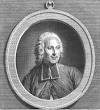
Jean-Antoine Nollet |
birth Jean-Antoine Nollet Jean-Antoine Nollet, French clergyman and physicist (died 1770) |
|
19 Nov 1711

Mikhail Vasilyevich Lomonosov |
birth Mikhail Vasilyevich Lomonosov Born 19 Nov 1711; died 15 Apr 1765 at age 53. Russian poet, scientist, and grammarian who is often considered the first great Russian linguistic reformer. He also made substantial contributions to the natural sciences, reorganized the St. Petersburg Imperial Academy of Sciences, and established in Moscow the university that today bears his name. |
|
19 Nov 1711
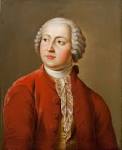
Mikhail Lomonosov |
birth Mikhail Lomonosov Mikhail Lomonosov, Russian scientist (died 1765) |
|
19 Nov 1722

Josef Leopold Auenbrugger |
birth Josef Leopold Auenbrugger Born 19 Nov 1722; died 17 May 1809 at age 86. Austrian physician who devised the diagnostic technique of percussion (the art of striking a surface part of the body with short, sharp taps to diagnose the condition of the parts beneath the sound). With this technique, he could estimate the amount of fluid in a patient's chest and the size of his/her heart. (As a boy he had tapped the wine barrels in his father's cellar to find how full they were.) After seven years of investigation, he published the method in Inventum Novum (1761), though his technique did not gain recognition and acceptance until years after his death. When a translator republished the work in French (1808) the method gained acceptance around the world, and through time to the present as a fundamental diagnostic procedure. |
|
19 Nov 1722
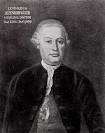
Leopold Auenbrugger |
birth Leopold Auenbrugger Leopold Auenbrugger, Austrian physician (died 1809) |
|
19 Nov 1775

Johann Karl Wilhelm Illiger |
birth Johann Karl Wilhelm Illiger Johann Karl Wilhelm Illiger, German entomologist and zoologist (died 1813) |
|
19 Nov 1805
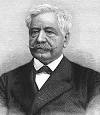
Vicomte Ferdinand, de Lesseps |
birth Vicomte Ferdinand, de Lesseps Born 19 Nov 1805; died 7 Dec 1894 at age 89. French diplomat, who supervised the construction of the Suez Canal. While in the consular service in Egypt he became aware of plans to link the Mediterranean and the Red Sea by means of a canal, and from 1854 onwards devoted himself to the project. Work began in 1859 and the Suez Canal was opened ten years later (1869). In 1881, he embarked on the building of the Panama Canal, but had not anticipated the difficulties of this very different enterprise. The climate, with its torrential rains, incessant heat and fatal disease, took its toll. Financial mismanagement, stock failure and bad publicity eventually forced the failure of the company. The project was abandoned in 1889. It was eventually completed by the United States. |
|
19 Nov 1807

Lionel Lukin |
Lionel Lukin (technology) English inventor Lionel Lukin launches the world's first sailing self-righting rescue life-boat, the Frances Anne, at Lowestoft. |
|
19 Nov 1840
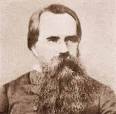
Aleksandr Onufriyevich Kovalevsky |
birth Aleksandr Onufriyevich Kovalevsky Born 19 Nov 1840; died 22 Nov 1901 at age 61. Russian founder of comparative embryology and experimental histology, who first established that there was a common pattern in the embryological development of all multicellular animals. He studied the lancelet, a fish-shaped sea animal; about 2-in. (5-cm) long; then wrote Development of Amphioxus lanceolatus (1865). Then, in 1866, he demonstrated the similarity between Amphioxus and the larval stages of tunicates and established the chordate status of the tunicates. In 1867, Kovalevsky extended the germ layer concept of Christian Heinrich Pander and Karl Ernst von Baer to include the invertebrates, establishing an important embryologic unity in the animal kingdom. This was important evidence of the evolution of living organisms. |
|
19 Nov 1850
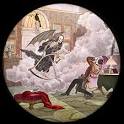
Magic lantern slides |
Magic lantern slides In 1850, the first U.S. patent for magic lantern slides made of glass plate was issued to their inventor Frederick Langenheim of Philadelphia, Pa. (No. 7,784) as an "improvement in photographic pictures on glass." |
|
19 Nov 1861

Petroleum export |
Petroleum export In 1861, the first export shipment from the U.S. to Europe left Philadelphia, Pa. for London, England. A cargo of 1,329 barrels was carried by the Elizabeth Watts, a 224-ton brig captained by Charles Bryant. Since it was not easy to recruit a crew willing to work above a cargo of oil, a crew was shanghaied. The cargo arrived at Victoria Docks, London, on 9 Jan 1862. |
|
19 Nov 1868

Gustave-Auguste Ferrié |
birth Gustave-Auguste Ferrié Born 19 Nov 1868; died 16 Feb 1932 at age 63. French scientist and army general who contributed to the development of radio communication in France. He participated with Guglielmo Marconi in experimental wireless telegraphy (1899) between Paris, France and England. In 1903, Ferrié directed the installation of a transmitter and antennas on the Eiffel Tower in Paris for long-range radiotelegraphy. Within 5 years, he had improved its effective range from 400 km (250 miles) to 6,000 km (3,700 miles). This led him to develop mobile military transmitters to maintain radio contact with Paris. He also experimented with radio transmissions from aircraft to enable the aerial direction of artillery fire. Early in WW I, (Colonel) Ferrié led a corps of technicians who set up a network of radio direction finders. |
|
19 Nov 1872

Adding machine |
Adding machine In 1872, the first U.S. patent for an adding machine capable of printing totals and subtotals, called a "calculating machine," was issued to E.D. Barbour of Boston, Mass. However, it was not practical. (No. 133,188) |
|
19 Nov 1875
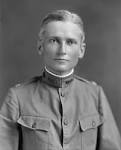
Hiram Bingham |
birth Hiram Bingham Born 19 Nov 1875; died 6 Jun 1956 at age 80. American archaeologist and politician who in 1911 discovered Machu Picchu in a remote part of the Peruvian Andes. In 1911, while he was a Yale University professor searching for the lost Inca capital of Vilcabamba, he paid a Peruvian guide to lead him to a nearby ruin. The guide took him 2,000 feet (610 meters) up a precipitous slope, and straight into the "lost" city of Machu Picchu. As one of the greatest archaeological sites in the Americas, Machu Picchu remains a mystery. Some scholars believe it to be the birthplace of the Inca Empire; others see it as a ceremonial center or military citadel. Bingham also discovered the Inca city of Viitcos. His work was a catalyst for archaeological study in the Andes and in other parts of South America. |
|
19 Nov 1887

James B. Sumner |
birth James B. Sumner Born 19 Nov 1887; died 12 Aug 1955 at age 67. James Batcheller Sumner was an American biochemist who shared (with John Howard Northrop and Wendell Meredith Stanley) the 1946 Nobel Prize for Chemistry. Sumner was the first to crystallize an enzyme to show that enzymes were proteins. He learned to live one-handed from age 17, due to an accident. After earning his Ph.D. (1914), he joined the faculty of Cornell University Medical College. By 1917, he began investigating the protein nature of enzymes. It was technically difficult, taking nine years, before he produced a crystalline globulin with high urease activity in 1926. The significance of his work went unappreciated for a number of years, but by 1946, he was awarded a half-share of the Nobel Prize for Chemistry, “for his discovery that enzymes can be crystallized.” In 1947 he became director of a new laboratory for enzyme chemistry, at Cornell. |
|
19 Nov 1894

Heinz Hopf |
birth Heinz Hopf Heinz Hopf (died 1971), German mathematician. |
|
19 Nov 1895

Paper pencil |
Paper pencil In 1895, the first U.S. patent for a paper pencil was issued to Fredrick E. Blaisdell of Philadelphia, Pa. His patent No. 549,952 was accompanied by No. 550,212 on the same date on a machine for manufacturing pencils. |
|
19 Nov 1899

Sir John William Dawson |
death Sir John William Dawson Died 19 Nov 1899 at age 79 (born 13 Oct 1820). Canadian geologist who made numerous contributions to paleobotany and extended the knowledge of Canadian geology. Dawson was born and raised in Pictou, Nova Scotia, where the many sandstone and coal formations provided fertile ground for his boyhood interest. Often fossil leaves could be found while gathering shale to make slate pencils. Thus, as a boy, he developed an incurable interest in geology and was an avid collector of local fossils. His working life began with mining companies and doing field work. He studied the geology of Nova Scotia, with a particular interest in the fossil forests of the coal-bearing strata. During his early scientific explorations, which culminated in the publication of Acadian Geology, he made many important discoveries of fossil life, great and small. These included fossil plants, trackways of lowly invertebrates, footprints, skeletons of reptiles and amphibians, millipedes and the earliest land snails. Dawson discovered the oldest land plant known at the time, Psilophyton (1859), from Devonian rocks (dating from 408 - 360 million years ago). In Air Breathers of the Coal Period (1863) he described newly discovered fossil animals He had an uncanny ability to understand the ancient environments in which rocks had formed and to decipher their correct ages. Dawson's energetically promoted scientific institutions in Canada, though he opposed Darwin's evolutionary theories. |
|
19 Nov 1910

Rudolf Fittig |
death Rudolf Fittig Died 19 Nov 1910 at age 74 (born 6 Dec 1835). German organic chemist who is famous for his extensive work synthesizing of organic compounds in the late 19th century. The action of sodium on organic compounds discovered by Wurtz (1817–84), was extended by Fittig using a mixture of an aromatic and alkyl haloid to produce homologues of benzene. Fittig prepared pinacones (which he named), diphenyl, phenanthrene (1872), coumarone (1883), toluene (with Tollens in 1864), and many other substances. He separated several aromatic compounds from coal tar, studied the reactions of unsaturated acids. Fittig proposed the correct structures for the quinones and (1871, with Ira Remsen) for the alkaloid piperine that gives the spice black pepper its taste and smell . |
|
19 Nov 1912

George Emil Palade |
birth George Emil Palade George Emil Palade (died 2008), Romanian-born microbiologist, winner of the Nobel Prize in Physiology or Medicine. |
|
19 Nov 1915

Earl W. Sutherland Jr. |
birth Earl W. Sutherland Jr. Born 19 Nov 1915; died 9 Mar 1974 at age 58. American pharmacologist and physiologist who was awarded the 1971 Nobel Prize for Physiology or Medicine for isolating cyclic adenosine monophosphate (cyclic AMP) and demonstrating its involvement in numerous metabolic processes that occur in animals. |
|
19 Nov 1918

Charles Richard Van Hise |
death Charles Richard Van Hise Died 19 Nov 1918 at age 61 (born 29 May 1857). U.S. geologist who conducted basic geological studies of the Precambrian (570,000,000 to 4,600,000,000 years ago) formations of the Lake Superior region, particularly the iron ores in these formations. These studies were useful for the economic exploitation of the vast iron-ore fields found in that region. He was very interested in, and wrote about, the conservation of natural resources. He regarded soil conservation as "the basal asset of the nation," followed by the "economic mining and use of coal, the conservation of the forests, and the use of metals with the minimum waste." |
|
19 Nov 1918
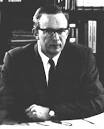
Hendrik Christoffel Van de Hulst |
birth Hendrik Christoffel Van de Hulst Born 19 Nov 1918; died 31 Jul 2000 at age 81. Dutch astronomer who predicted theoretically (1944) that in interstellar space the amount of neutral atomic hydrogen, which in its hyperfine transition radiates and absorbs at a wavelength of 21 cm, might be expected to occur at such high column densities as to provide a spectral line sufficiently strong as to be measurable. Shortly after the end of the war several groups set about to test this prediction. The 21-cm line of atomic hydrogen was detected in 1951, first at Harvard University followed within a few weeks by others. The discovery demonstrated that astronomical research, which at that time was limited to conventional light, could be complemented with observations at radio wavelengths, revealing a range of new physical processes. |
|
19 Nov 1918

Hendrik C. van de Hulst |
birth Hendrik C. van de Hulst Hendrik C. van de Hulst (died 2000), astronomer. |
|
19 Nov 1922

Stanley Keith Runcorn |
birth Stanley Keith Runcorn Born 19 Nov 1922; died 5 Dec 1995 at age 73. British geophysicist Southport, Lancashire, who was the first to discover evidence of the periodic polar reversals of the Earth's magnetic field. In the 1950s he was a pioneer in the fledgling discipline of paleomagnetism, or remanent magnetism, the study of the residual magnetism. He also made substantial contributions to various fields, including convection in the Earth and Moon, the shape and magnetic fields of the Moon and planets, magnetohydrodynamics of the Earth's core, earth currents, changes in the length of the day and polar wandering, continental drift and plate tectonics. He was murdered, aged 73, when he disturbed a thief in his motel room in San Diego, while on a US lecture tour. |
|
19 Nov 1922

Yuri Valentinovich Knorozov |
birth Yuri Valentinovich Knorozov Born 19 Nov 1922; died 31 Mar 1999 at age 76. Russian linguist, epigraphist, and ethnologist who played a major role in the decipherment of Mayan hieroglyphic writing. Remarkably, though not permitted to leave the Soviet Union during the post-war decades he focused on the Mayan language, Knorozov still managed to decipher the phonetic code of the pre-Columbian society on the Mexican peninsula. Others before him had tried to "read" Maya glyphs without success, because they tried to interpret them in terms of an alphabet. Knorozov instead advocated phoneticisms. He realized that the purported alphabet represented a part of the Maya syllabary, and then identified many of the syllabic marks, or glyphs, found on the many Mayan tombs and monuments. |
|
19 Nov 1936

Yuan T. Lee |
birth Yuan T. Lee Born 19 Nov 1936. Taiwanese-American chemist who shared (with Dudley R. Herschbach and John C. Polanyi) the Nobel Prize for Chemistry in 1986 for his role in the development of chemical-reaction dynamics. As a postdoctoral researcher, Lee experimented with and further developed Herschbach's invention of the “crossed molecular beam technique”. This studied reactions between molecules at low pressures by letting beams of molecules and/or atoms meet at one point in space. Lee extended Herschbach's technique, introducing mass spectroscopy to identify the products resulting from the reactions of oxygen and fluorine atoms with complex organic compounds. |
|
19 Nov 1944
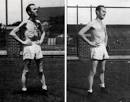
Minnesota Starvation Experiment |
Minnesota Starvation Experiment (medicine) Minnesota Starvation Experiment begins. |
|
19 Nov 1959

Edward C. Tolman |
death Edward C. Tolman Died 19 Nov 1959 at age 73 (born 14 Apr 1886). Edward Chace Tolman was an American psychologist who developed a system of psychology known as purposive, or molar, behaviourism, which attempts to explore the entire action of the total organism. Because of his strong affiliation with building a scientific psychology he embraced the core notion of behaviorism—that what an organism does is the source of legitimate data. Contrary to John B. Watson's atomism approach, Tolman advocated the use of intervening variables and focused on a number of very non-behaviorist processes such as purpose, expectation, belief and spatial representation. His major book was Purposive Behavior in Animals and Men (1932) in which he summarized a significant series of experiments on the white rat. |
|
19 Nov 1973

Nim Chimpsky |
birth Nim Chimpsky Nim Chimpsky (d. 2000), chimpanzee |
|
19 Nov 1976

Jack Dorsey |
birth Jack Dorsey Jack Dorsey, American web developer |
|
19 Nov 1983

Reinout Willem van Bemmelen |
death Reinout Willem van Bemmelen Died 19 Nov 1983 at age 79 (born 14 Apr 1904). Dutch geologist whose studies of the regional geology of Indonesia led to recognition of the importance of island areas in the development of the Earth's crust. Long before others even thought about compiling an article on this archipelagos, he published his biggest contribution, the Geology of Indonesia (1949). Still often cited, this book covers broad aspects of the regional geology of Indonesia, which is prolific in terms of hydrocarbon and other mineral resources. Indonesia is part of the volcanic “ring of fire” and one of the most complex geological settings in the world because it lies at the junction of three major tectonic plates (Pacific, Indian-Australian, and Eurasian). He also researched continental drift and the winds of the equatorial stratosphere. |
|
19 Nov 1990
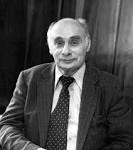
Georgy Nikolaevich Flerov |
death Georgy Nikolaevich Flerov Died 19 Nov 1990 at age 77 (born 2 Mar 1913). Soviet physicist who, in 1941, recognized that uranium undergoes spontaneous fission (needing no neutron bombardment). He was one of the early Russian investigators of nuclear fission. In early 1942 , Flerov noticed that articles on nuclear fission were no longer appearing in western journals. Recognizing the implication that such research had become secret, he wrote to Premier Joseph Stalin, insisting that "we must build the uranium bomb without delay," (subsequently led by Igor V. Kurchatov.) In later research, Flerov announced synthesis of isotopes of element 104 (1965) and 106 (1974). Co-discoveries were made in the U.S. Several names were suggested. Eventually the adopted names were rutherfordium and seaborgium. |
|
19 Nov 1996

Confederation Bridge |
Confederation Bridge In 1996, the last component of the Confederation Bridge was placed, crossing the Northumberland Strait, Canada. The piers are 250 metres apart and offer a ship's clearance of 172 metres in width. The 12.9 km Confederation Bridge joins Borden-Carleton, Prince Edward Island and Cape Jourimain, New-Brunswick and is the longest bridge over ice covered waters in the world. The bridge construction began in Oct 1993, and was opened on 31 May 1997. It carries two lanes of traffic 24 hours a day, seven days a week and takes approximately 10 minutes to cross at normal travelling speeds. The bridge was built curved so that drivers could see the traffic in front of them, a design chosen to reduce accidents. |
|
19 Nov 1996

Grace Bates |
death Grace Bates Grace Bates (b. 1914), American mathematician. |
|
19 Nov 1997

Des Moines, Iowa |
Des Moines, Iowa (biology) In Des Moines, Iowa, Bobbi McCaughey gives birth to septuplets in the second known case where all seven babies were born alive, and the first in which all survived infancy. |
|
19 Nov 1998

Ted Fujita |
death Ted Fujita Died 19 Nov 1998 at age 78 (born 23 Oct 1920). Tetsuya Theodore Fujita was a Japanese-American meteorologist who increased the knowledge of severe storms. In 1953, he began research in the U.S. Shortly afterwards, he immigrated and established the Severe Local Storms Project. He was known as "Mr. Tornado" as a result of the Fujita scale (F-scale, Feb 1971), which he and his wife, Sumiko, developed for measuring tornadoes on the basis of their damage. Following the crash of Eastern flight 66 on 24 Jun 1975, he reviewed weather-related aircraft disasters and verified the downburst and the microburst (small downburst) phenomena, enabling airplane pilots to be trained on how to react to them. Late in his career, he turned to the study of storm tracks and El Nino. |
|
19 Nov 2002

Patent |
Patent In 2002, a U.S. patent for "Registered pedigree stuffed animals" was issued to David L. Pickens of Honolulu, Hawaii (No. 6,482,067). The toy animals are designed to simulate the biological laws of inheritance both for educational, recreational and aesthetic purposes. According to the patent, a pair of opposite sex "parent" toy animals are sold with a serial number by which the parent's genotype and phenotype may be identified. Owners of the 'parent' toy animals, having registered with the manufacturer, may later request "breeding" of the animals, and receive at least one "offspring" toy animal randomly selected from a litter having traits determined according to the registered genotypes of the parents and the Mendelian laws of inheritance." |
|
19 Nov 2004
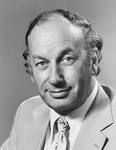
John Robert Vane |
death John Robert Vane Died 19 Nov 2004 at age 77 (born 29 Mar 1927). English biochemist, who shared the 1982 Nobel Prize for Physiology or Medicine (with Sune K. Bergström and Bengt Ingemar Samuelsson of Sweden) for their isolation, identification, and analysis of prostaglandins. In 1971, Vane discovered how aspirin's effect was to block the formation of the prostaglandins involved in pain, fever, and inflammation. Further, a relatively small dose (75 mg/day) prevents blood clotting and lessen heart attacks, strokes and leg thromboses. In 1976, he discovered prostacyclin, a blood-vessel dilating prostaglandin that inhibits blood-clotting. His discoveries led to the Ace inhibitors, a new class of drugs giving life-saving benefits to patients with pulmonary hypertension, and new treatments for heart disease. |
|
19 Nov 2004

Piermaria Oddone |
Piermaria Oddone (appointments) Particle physicist Piermaria Oddone is appointed to succeed Michael Witherell as director of Fermilab (from July 1, 2005). |
|
19 Nov 2013
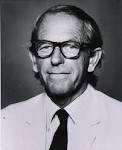
Frederick Sanger |
death Frederick Sanger Died 19 Nov 2013 at age 95 (born 13 Aug 1918). English biochemist who was twice the recipient of the Nobel Prize for Chemistry. He was awarded the prize in 1958 for his work on the structure of proteins, especially the determination of the structure of the insulin molecule. He shared the prize (with Paul Berg and Walter Gilbert of the United States) in 1980 for his contribution concerning the determination of base sequences in nucleic acids. |